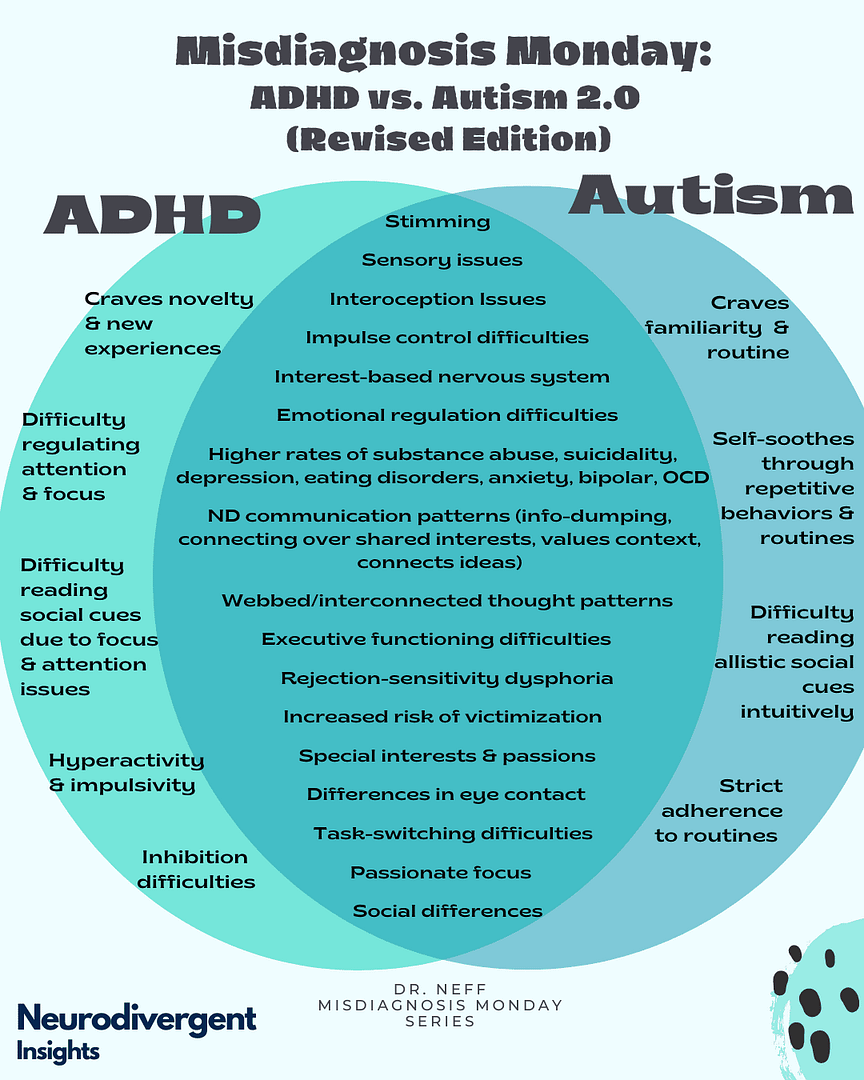Symptoms of ADHD and Autism
Symptoms of ADHD and autism can be confused and are often experienced by the same child. Parents and caregivers may mistake one for the other. It is important to diagnose and treat both disorders. However, more research is needed to understand the connection between the two. Both conditions are developmental disorders that affect communication, interaction, and social development.
The defining symptoms of ADHD include difficulty concentrating, impulsivity, and hyperactivity. Children with autism also have problems with attention, communication, and social interaction. Moreover, they may have trouble with repetitive behavior, as well as engaging in repetitive movements. In addition, children with ASD may pay little attention to other environmental stimuli, such as noises or other common stimuli. They are also at high risk for irritability and oppositional behaviors. In addition, they may have trouble understanding and interpreting social signals and emotions. Lastly, they are more likely to have learning disabilities.

In 2013, the American Psychiatric Association updated their diagnostic guidelines. They now recognize that ADHD and autism can co-occur. Although both disorders share antecedents and have similar symptoms, they have different symptoms and treatment modalities. As a result, clinicians have difficulty distinguishing between the two, which can make diagnosis and treatment difficult.
Historically, researchers have believed that the two conditions are not related. However, it is possible that their genetic makeup might be linked. Furthermore, studies have suggested that the two conditions may occur at the same time. Ultimately, the cause of the condition is still unknown. Nevertheless, many scientists are studying the link between ADHD and autism. These findings are important because they could provide new ways to help support patients with these disorders.
As researchers continue to study these disorders, they will be able to learn more about the causes of both conditions. The most significant form of therapy for children with both disorders is behavioral therapy. Therapists will work with the child and his or her parents. They will develop a program that is tailored to the child’s needs. They will also observe the child’s behavior and eliminate other potential causes of symptoms. During the treatment process, therapists will speak to the parents and the child’s teachers. This is the most effective form of therapy for both ADHD and ASD.
Aside from behavioral therapy, other forms of therapy can help with the symptoms of both disorders. For example, parents can be taught new strategies to cope with their child’s disorder. They can also ask their physician about clinical trials for medications that might help lessen the symptoms of either ADHD or autism.
As a result, more research is needed to understand the connection of ADHD and autism. For now, it appears that the most likely explanation for the motoric problems, repetitive behavior, and impulsive behavior is ADHD. In addition, further studies are needed to understand the early disruption of attentional control. As a result, the most important thing is to get the right diagnosis. This is essential in order to receive effective support for the patient.







